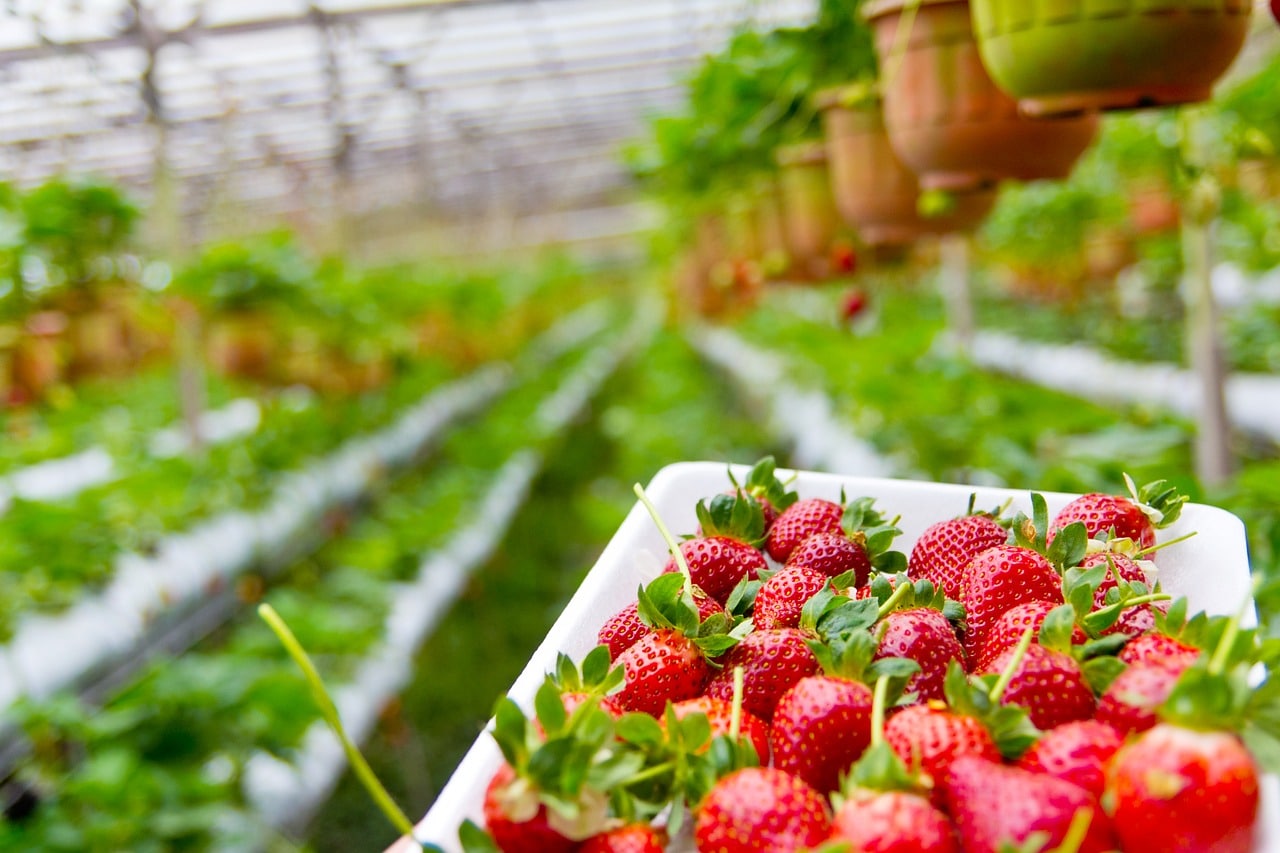The answer to how long does it take for strawberries to grow in hydroponics varies because it can take months to years depending on the variety you use. But to give you a general idea, you can start harvesting your fruits four weeks after they open their flowers. This following article will discuss how you can shorten the hydroponic cultivation of your strawberries.
The good news is that strawberries thrive virtually anywhere in the US, and if you have a greenhouse, you can use it with your hydroponic system. This combination makes it easier to maintain hydroponic strawberries’ ideal growing conditions and prevent growth and production drawbacks.

How Long Does It Take For Strawberries To Grow In Hydroponics: The Quicker Solution
As mentioned earlier, growing hydroponic strawberries can take as quick as months or as long as years. However, a reliable sign to know that your strawberries are ready for harvest is waiting after they open their flowers. Wait after four weeks upon noticing the flowers, and your fruits should be at their perfect ripeness.
What strawberries grow fast in hydroponics?
Do you want to know a tip on how to shorten the timeline for hydroponic strawberries? Your practices affect the system’s consistency, but the strawberry variety is a significant factor if time is essential. Upstart University recommends ever-bearing or day-neutral strawberries for this set-up.
Additionally, use strawberries from rootstock for hydroponics instead of those from seeds. After all, runners will take faster than seeds in terms of production. Therefore, using specific varieties from vegetative growth can cut the growing period by months or even years.
Why grow strawberries in hydroponics?
Before you get discouraged after seeing that berries can take years to grow in hydroponics, it’s important to note that this system is still an efficient solution for harvesting them sooner. Your garden will even be more productive, and the production of high-quality strawberries outside their season is possible.
You’ll skip the need to continually water them and save on water while avoiding mistakes from over or underwatering the strawberries. Another potential drawback that you can prevent by growing strawberries in hydroponics is a limitation in space. Remember that these plants have spacing requirements, and you can experience delays in growth and production if their area is inadequate.
A combination of greenhouse and vertical stacking of hydroponic strawberries solves this dilemma, leading to a high yield. Speaking of yield, the hydroponic system also makes it easy to add a nutrient solution to encourage growth and production. Lastly, the ability to avoid soil pests and diseases skips the effects that can delay your strawberries’ development.
How To Grow Hydroponic Strawberries
Starting
It’s crucial to learn some tips on how to grow them for success to avoid delays in your hydroponic strawberries. Choose an ever-bearing or day-neutral variety if you want the plants to produce fruits continuously. The former can give you three harvests in a year, while day-neutral strawberries can grow fruits throughout their life.
As mentioned previously, start from cuttings or clones instead of seeds for hydroponics. This cuts the time before harvesting, and you’ll also save effort and costs for the months while waiting for the seeds to grow. There are many transplants to choose from, so be strategic with what you’ll use for starting hydroponic strawberries.
Growing
Temperature
Hydroponic strawberries will thrive best indoors, which puts you at an advantage since you can control the environment more comfortably. The University of Arizona mentioned the conditions that are ideal for hydroponic strawberries. Start by maintaining the daytime temperature between 68 to 75.2°F, but you can always adjust this range depending on what is suitable for your cultivar’s photosynthetic rate.
Light
Hydroponic strawberries will also benefit from grow lights because the day length plays a role in the fruits’ dormancy. Some experienced gardeners recommend giving 10 to 12 hours of light using LED. However, be careful in using grow lights since they can sometimes affect the indoor temperatures.
Relative humidity and CO2
What is the ideal humidity for hydroponic strawberries? If the greenhouse has too much moisture, you risk having mold and mildew on your strawberries. You can improve the airflow inside or use a dehumidifier to address this problem.
It’s also crucial to use fogging in the day since strawberries tend to struggle with a dry climate and low relative humidity, especially at night, where it’s also detrimental. The University of Arizona solves these issues using high-pressure fogging at day and low-pressure misting at night. Lastly, check the CO2 concentration indoors to ensure that there will be no problems for photosynthesis.
Maintenance
For maintenance, the first things to check are if the water is free of contaminants, and if the system is in the pH range between 5.8 to 6.2. After these hydroponics conditions, you can prune runners, leaves, or flowers to help with plant’s vegetative growth. You can then check for ripeness four weeks after the flowers open to know if they are ready for harvest.
Conclusion
Hydroponics and strawberries make a sensible combination. But how long does it take for strawberries to grow in hydroponics? The timeline can last from months to years, depending on the variety. Additionally, you have to be diligent with the practices to ensure no drawback in growth and production.
You can cut the waiting period by using runners for starting instead of seeds. University extensions also recommend using day-neutral and ever-bearing varieties.
